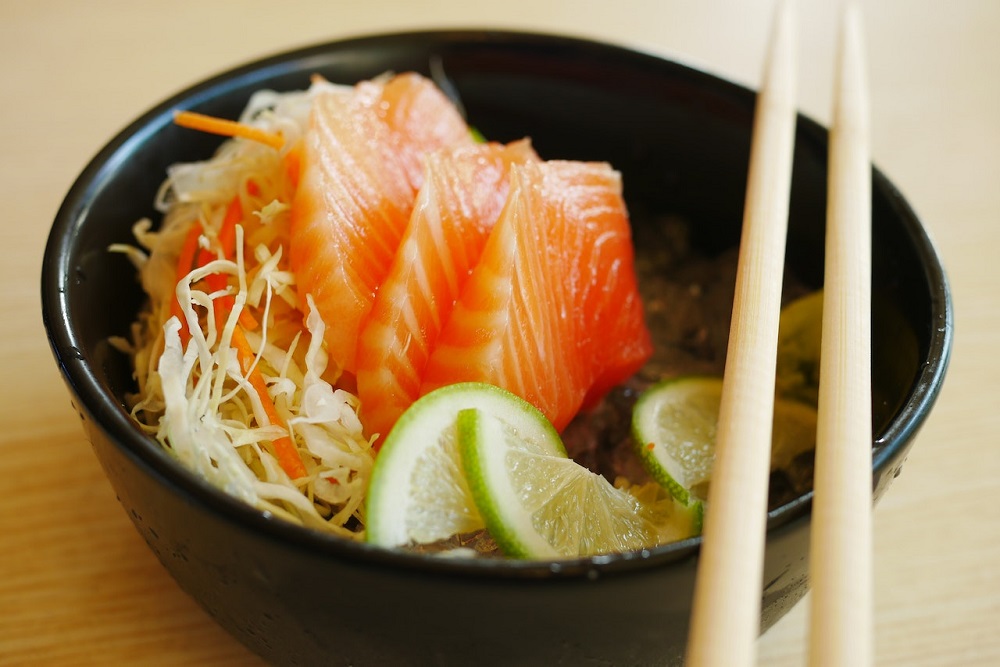Fish are delicious and nutritious. But do you know which fish has the highest omega-3 levels? Well, that’s what we’re here to find out.
I wrote about the benefits of Omega 3 in fish and gave a few examples. However, it is time to dig a little deeper into this subject.

Thousands of fish species have omega-3 fatty acid levels that fall above 2% of total fatty acids. But which ones have the highest levels? While fish can be a good source, in some cases, they can be high in mercury or other pollutants. That’s why I’ve compiled a list of five fish with the highest levels of omega-3s — making them worth consuming.
Table of Contents
Top 5 Fish With The Highest Omega-3 Levels
#1 Salmon
Omega-3 levels: 100 grams (3.5 ounces) contain 2,150 mg of a combination of DHA and EPA.
Salmon is frequently the go-to option for fatty, oily seafood, and for a good reason. A large filet of this tasty and healthful fish contains over four grams of omega-3 fatty acids. In fact, one filet of premium Norwegian Salmon, like the kind you can find at some seafood restaurants, is sufficient to supply the required Omega-3 weekly intake.
Salmon is also rich in vitamin D, selenium, and several B vitamins, making it a healthy fish.
#2 Mackerel
Omega-3 levels: 100 grams (3.5 ounces) contain 4,580 mg of a combination of DHA and EPA.
Mackerel is packed with good levels of Omega-3 and has a rich flavor that makes it perfect for mixing up different diets.
Mackerel is virtually on the same level as Salmon in Omega-3 fatty acids. Some high-grade Mackerel might even have higher Omega-3 levels than Salmons, so you can hop between both options depending on your flavor choice.
Mackerel is also a good source of Vitamin B-12 and Selenium. It is a tasty choice to add to a cold salad, smoke, or consume whole.
#3 Herring
Omega-3 levels: 100 grams (3.5 ounces) contain 2,150 mg of a combination of DHA and EPA.
Herring is a small-to-medium-sized oily fish popularly used for precooked or cold-smoked dishes. In England, it is known as “Kippers” and is frequently sold as a canned snack or smoked and served with eggs for breakfast.
A 3.5-ounce (100-gram) portion of herring has 779% of the daily value (DV) for vitamin B12 and about 100% of the DV for selenium.
Herring is often pickled and served as an appetizer before meals, but these tiny fish can also be grilled, baked in an oven, or boiled. It is also a great source of calcium, magnesium, niacin, selenium, and vitamin B-12.
#4 Sardines
Omega-3 levels: 100 grams (3.5 ounces) contain 982 mg of a combination of DHA and EPA. 149 grams contains 1,463 mg of DHA and EPA.
Sardines are a type of tinned fish that are frequently preserved in salt and oil. This preservation method led many people to believe that they were unhealthy. But that’s far from the truth.
Whether canned or fresh, Sardines are healthy, especially if the amount of salt is low and only high-quality olive oil is used.
Sardines seasoned with sea salt and top-quality olive oil bring out the fish’s essence. Each serving contains more than two grams of Omega-3.
With over 200% of your required daily consumption, Sardines are a top-notch source of B-12. With a beautiful glass of white wine, they are a delicious snack on toast.
#5 Anchovies
Omega-3 levels: 100 grams (3.5 ounces) contain 2,053 mg of a combination of DHA and EPA. 20 grams (5 anchovies) contains 411 mg of DHA and EPA.
Anchovies are little fish frequently preserved in cans and are used to add a solid taste to foods like salads and pizza. In addition to selenium and several B vitamins, their Omega-3 content is between 800 mg and 1 gram per serving. The bones also contain a lot of calcium, so don’t remove them next time.
These tiny fish have a robust flavor, making them a fantastic ingredient to slice or ground into robust sauces and dips. Unknown fact: they are even utilized in producing the infamously difficult-to-pronounce Worcestershire sauce!
if you wonder where you can buy these types of fish loaded with Omega 3 you should have a look at my seafood reviews here on this page.
You can use fish and take advantage of its health benefits on some of the hamburger alternatives I found.
Conclusion
Hopefully, this list has taught you a thing or two about the nutritional power of certain fish. It’s important to know that not all fish are created equal; some species have more omega-3 acids while others have fewer.
In the end, it’s best to eat most fish often (at least once a week), and a varied diet is always best. For particular health concerns, some may need more omega-3 fatty acids than they get from fish, so supplements might be in order.
However, by and large, eating fish is good for your health. And with their low mercury levels, finding a safer way to eat seafood is hard.
